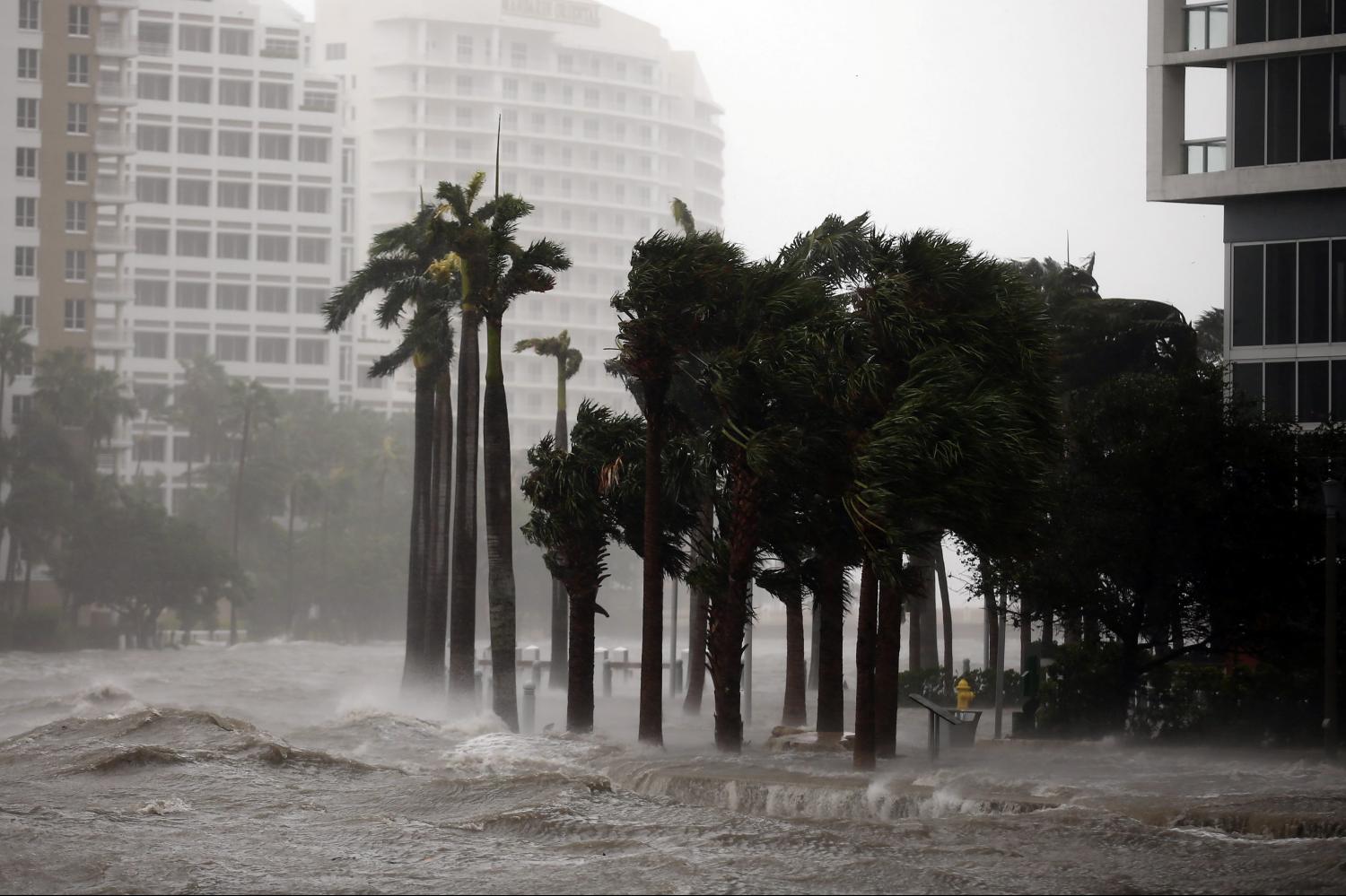EXECUTIVE Summary
Many government policies create incentives for people to make economically detrimental decisions, including settling and building on land exposed to hurricanes, floods, and wildfires. These policies already cost taxpayers tens of billions of dollars annually and may cost a lot more by distorting the allocation of trillions of dollars of capital into danger-prone areas. Market forces that are normally powerful arbiters of risk are blunted by the assumption that losses, if they happen, will be repaid by government. Worse, where these policies amplify dangers that effect is likely to become more severe due to the impacts of global warming.
We introduce a framework for analyzing how federal spending patterns under current and possible future policies may shield or remove individuals, firms and local governments from some of the financial harm created by decisions they take—what economists often call “moral hazard.” Whereas these actors are often in a good position to make decisions that reduce exposure and damage from natural perils, in the presence of moral hazard they could make different decisions that, in effect, shift the cost of their choices.
What’s new in this paper is a framework for looking at individual policies and government programs according to how they affect the damages associated with natural disasters. We focus on the subset of those disasters that could be affected by climate change and thus exclude earthquakes, tsunamis and others whose incidence is unlikely to change in a warmer world. We distinguish between those that merely aim for simple recovery after peril hits—thus prone to create moral hazard if they discourage efforts to reduce dangers—and policy programs that aim to improve resilience against future perils. While there are many diverse domains of federal policy, we focus on policy programs in three areas: a) disaster response, b) building and maintenance of infrastructure; and c) subsidization of insurance for perils such as flood and crop losses.
Such a framework is essential because these policies are often highly complex, with varied goals that implicate agency action that are diffused across the whole of the federal government. For example, even within a single agency implementing a common core set of statutes—the Federal Emergency Management Agency (FEMA)—some programs aim at resilience while most focus only on recovery. In FEMA’s case, we find that just 14 percent of the 81 billion dollars in total disaster grant funding spent since 2005 have gone to programs that aim to advance resilience to climate related disasters—smart building and rebuilding. Outside that tiny fraction, most of FEMA spending has gone into activities, such as rebuilding, that have the unintended effect of encouraging risky siting decisions and other behaviors that may discourage those best prepared to address these risks from being fully responsible for adverse outcomes. Loans and grants managed by Housing and Urban Development (HUD) also exhibit funding differences that can propagate behavior that could invite risk rather than build resilience. Flood and crop insurance programs can create similar incentives that insulate homeowners, farmers, and businesses from the consequences of risky behavior. Federal infrastructure investments also, for the most part, focus on recovery and response to today’s patterns of disasters rather than planning for the changing climate of the future.
The value of a framework is the ability to look across the entirety of the federal government. Quantifying the exact impact of the misallocation of risk costs, or moral hazard aspects of these programs is very difficult not just because they are diffused across government but also because the programs that create these adverse incentives co-mingle worthy policy goals (e.g., protecting vulnerable populations that are living on the edge already) with unintended consequences that can create moral hazard and shift the costs of that hazard to the federal government. Assessing how spending affects behavior—ultimately by individual homeowners and others—is outside the scope of this paper. Our purpose is to take the first step in such a full blown analysis, understanding the allocation of policy effort, that can create the conditions for moral hazard.
A central finding from applying this framework is that there is currently a 7:1 ratio of disaster recovery to resilience funding across the federal government. While there is substantial evidence that resilience funding generates large social returns, in practice federal spending on climate-related disasters appears to be heavily weighted away from resilience. We find this ratio can be as high as 40:1 depending on the accounting system used. The exact size of this cost differential is hard to pin down, but a central estimate today suggests that the federal government currently spends at least about $46 billion per year responding to and recovering from large natural disasters, and only $6 to 7 billion on resilience towards future perils. However, that number does not account for the full federal backstop—the implicit promises of assistance that are widely assumed to exist when massive losses, such as extreme hurricane seasons, arrive. That backstop has been tested periodically—for example, by superstorm Sandy—and found robust (and thus valuable and costly but hard to measure).
The practice of focusing federal disaster policy on recovery reflects many political forces, including support for important humanitarian goals. However, there are three reasons to expect that the cost will grow and, plausibly, become unsustainable politically and also more distortionary economically. First, population migration already trends toward dangerous areas—such as hurricane-beset Florida and Texas. Second, property values rise as these more crowded populations get wealthier. These two factors alone explain the majority of the rise in extreme storm losses over the last 3 decades, and that trend is likely to continue. The third factor—climate change—is newer and will magnify these effects. By mid-century, it is plausible that the flow of annual federal expenditures on climate related disasters will need to rise significantly, and by later in the century the increases due to climate change will exceed the effects from population and economic growth. We compare current average annual payments for FEMA declared disasters over the last decade against the expected economic loss in 2012 if the climate conditions projected for last decades of the century existed in 2012 and find the latter to be 1000 times greater on average, with lots of variation across the country. The Congressional Budget Office (CBO), Government Accountability Office (GAO) and other agencies, along with some academics and many state policy makers and experts in the corporate sector, have begun to look closely at this because it is so fundamental to public finance and to expectations for the size and character of future natural hazard policies.
Policy reform will be challenging. At present, federal policies are shrouded in deep layers of political defense, which is why these widely known problems with the current arrangements have not led to much durable reform. There are many encouraging pilot efforts to re-align incentives and reduce moral hazard—for example, FEMA’s efforts to buy out properties that suffer repeated losses rather than simply funding rebuilding that leads to repeated cycles of loss. Such efforts, overall, have only small effects on overall expenditure and many come unglued politically when they operate as intended. Reforms to raise flood insurance premiums in 2012, a good idea, came unglued politically when homeowners and the real estate industry balked; Congress rolled the premiums back just two years later.
Mindful of the political challenges, it is essential to pursue policy reforms in advance of accelerating impacts of climate change. We explore scenarios that could open a window of opportunity for reform. A massive event is one such scenario, for such shocks allow for a reordering of political forces. This happened briefly after superstorm Sandy when special Congressional appropriations allocated between one-third and one half of funding for smart rebuilding—a share much larger than normal disaster recovery programs. The probability of such an event is rising, and the country needs to recalibrate and plan for how it might respond not just immediately but in terms of larger disaster policy reforms. When Hurricane Andrew hit Florida in 1992 it caused $26.5 billion in total economic damages; the same event today, with more people and value at risk, would be $80-100 billion. And it’s not just large events that can create a crisis. Other scenarios see multiple small and medium size events over a short period of time that ripple through the insurance markets and create cascading financial stress. Florida, even with one of the most sophisticated private-public frameworks for funding disasters in the U.S., is primed for such an unravelling. With its $2.6 trillion of exposed insured residential values through public and private insurers, the Florida economy would be dependent on the viability of post event financing and assessments of policyholders and taxpayers to recover financially from an unusually severe hurricane season.
We outline reforms, with an emphasis on the value of tracking the difference of recovery vs. resilience spending so that the full picture (and its potential imbalances) can be understood. Such improved situational awareness will require more action in Congress to account for spending along with more analysis of how moral hazard may be amplifying the nation’s exposure to natural disasters. No regular government accounting activity tabulates the full extent of programs that may create moral hazard through federal policy. We also see a role for the US National Climate Assessment, a regular analysis of the possible impacts of climate change on the country, as one of the places where better understanding of how federal and state policies are affecting behavior could alter the actual damages the country suffers from climate change and the response strategies that might reduce those damages. In addition to better awareness of the effects of these federal policies, we identify ways for the whole of the federal government to operate more strategically in this domain. Finally, we suggest that major reforms of disaster assistance, while politically challenging, would benefit from more explicit political design so they contain interlocking elements that are likely to be more durable. A policy commission, similar to the commissions that help design policies for closure of military bases (a politically fraught topic with many of the zero sum dynamics that make disaster reform difficult) could be helpful. We also suggest that reforms are most likely in the context of crisis, and thus there is a need for realism about when reforms can be accomplished—laying the foundation of more situational awareness and more politically savvy reform packages will lay the groundwork for change when the opportunity arises.
Over the last few cycles of executive control, it has become apparent that neither political party has a strategy for realigning disaster assistance in ways that make it more financially sustainable nor create the right incentives to make society more resilient in the face of climate change. Most policies have focused on “building back the same,” and the public for the most part has been supportive. While that might have been tolerable in an era of modest impacts from natural disasters, that era is ending. An urgent national priority is creating the right incentives so that private and public sector investments reduce the future damages from climate change and make the country more resilient.
The Brookings Institution is committed to quality, independence, and impact.
We are supported by a diverse array of funders. In line with our values and policies, each Brookings publication represents the sole views of its author(s).






